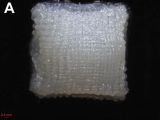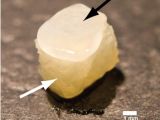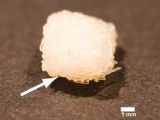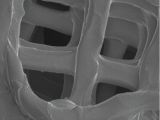You may or may not be familiar with the concept of osteochondral injuries. If it's the latter, never fear for you're about to get a crash course. It's the basis for the understanding of a new joint repair technique.
Or perhaps we should say half the foundation, since the other half consists of a certain 3D printed structure, or type of structure.
Said structure is a polymer 3D scaffold that can provide an engineering framework for the formation of 3D tissue blocks usable in repairing cartilage. But we're getting ahead of ourselves.
The nature of osteochondral injuries
Osteochondral injuries occur when the smooth edges of your bones fracture for whatever reason. The injury can be as light as a small crack, or the bone can actually break, releasing splinters inside the joint.
The fragmentation is understandably nasty, and the pieces of bone can either float loosely inside the joint or stay attached to the injured area.
In any event, the elbow, knee or angle you injured in this manner will invariably hurt like the most unspeakable of horrors. Permanent damage isn't a great prospect either. Pain and loss of function is common in all patients.
Osteochondral repairs are, at present, limited to microfractures alone. Grafting and chondrocyte transplantation are the ways to go.
Unfortunately, fibrocartilage forms almost always after these surgeries, a dense and tough material that fills in around a torn section and can lead to poor long-term results for the patient due to its less smooth and glassy articular nature.
How to rebuild joints using 3D printing
A study has been published, by researchers from the Department of Surgery at St Vincent’s Hospital, University of Melbourne, the Departments of Medicine and Clinical Neurosciences at St Vincent’s, and the Intelligent Polymer Research Institute at the University of Wollongong ARC Centre of Excellence for Electromaterials Science.
It is their claim that infrapatellar fat pad adipose stem cells can be used in conjunction with “3D printed chitosan scaffolds,” 3D scaffold-like polymeric structures that allow for the formation of 3D tissue blocks.
Those tissue blocks could be used to heal even severe damage to knees, elbows, ankles and wrists, allowing for new cartilage to form in four weeks, through a process called chondrogenesis.
Basically, a 3D printed scaffold is applied to an injured joint. Over time, the scaffold fills with stem cells which later turn into / create new cartilage. Definitely a concept to watch out for in the future.
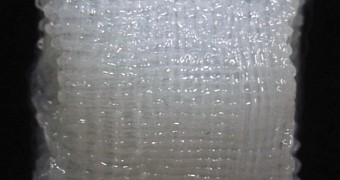
 14 DAY TRIAL //
14 DAY TRIAL // 
